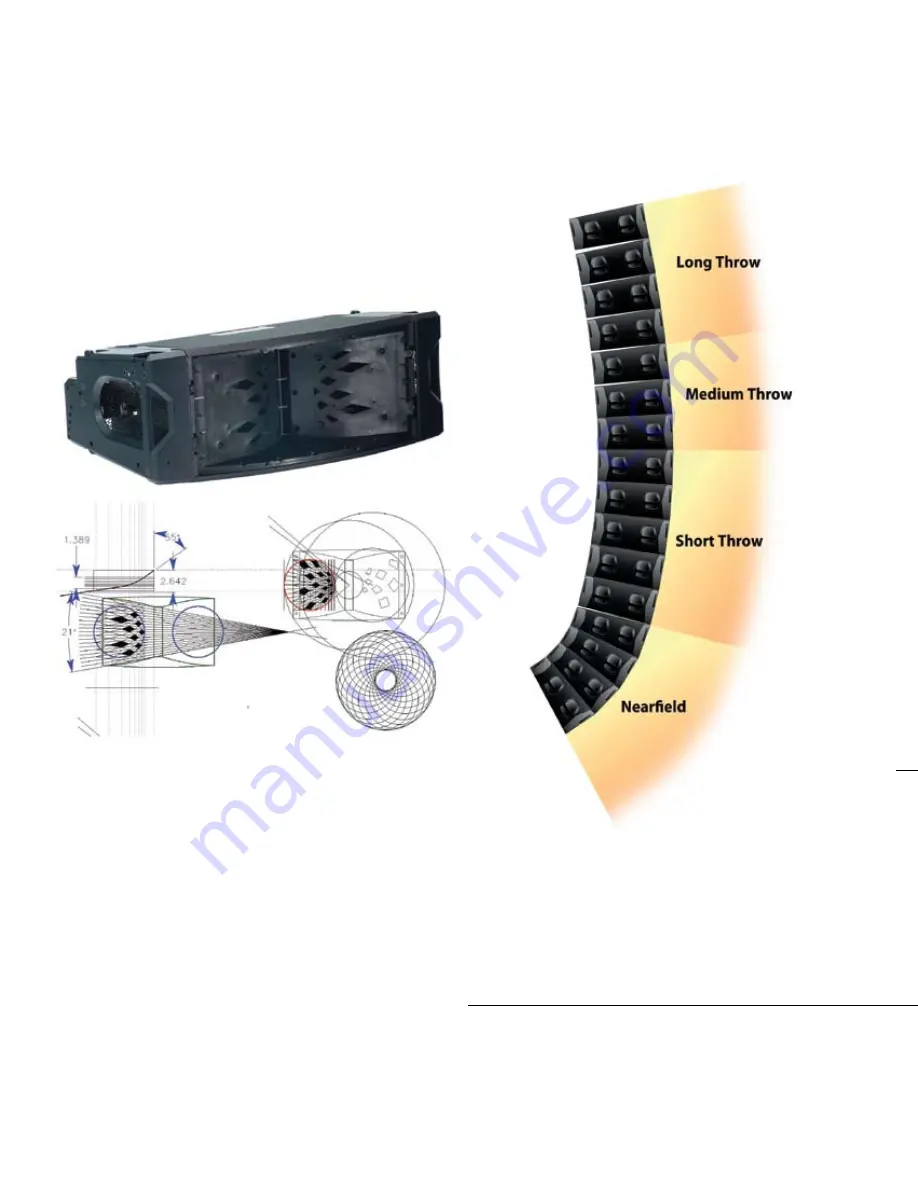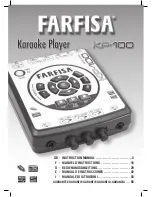
is missing since the void in the horn wall is still relatively large as
compared to the overall size of the horn.
The solution deployed on the NTL720 stems from a great deal
of research during the development of the acclaimed AX Series
of large-format installation loudspeakers. Called Concentric
Summation Array (CSA) technology, it calls for several smaller
openings in the horn, with a close look at the horn surface
revealing these openings to be “randomized” cutouts in
diamond-shaped patterns. The cutouts decrease the acoustic
center of the mids while also decreasing the percentage of open
area at any point along the horn. The result is greatly minimized
interference to the HF. (
Figure 2
)
Another EAW focus over the past several years has been beam
forming and array shading; in other words, the creation of
precise beam shapes combined with the ability to steer them as
desired for more tightly focused coverage, particularly at longer
distances. As a result, all transducers in the NTL720 are highly
efficient and capable of very high output – and packed into the
smallest space possible – while the large-mouth horn enhances
pattern control.
Called Phased Point Source Technology (PPST), it was first
developed for the EAW KF900 Series of extreme long-throw
loudspeakers. Briefly, PPST works in tandem with digital
processing to create a unified source sound impulse at all
points within the coverage area. Building upon our previous
use of phase and frequency “shading” techniques to manipulate
beam profiles and to blend vertically dissimilar subsystems, the
outcome is further integration of loudspeaker modules within an
array into a single acoustical element.
In tandem with PPST principles, EAW’s Divergence Shading
technology, utilized in the KF760 large-format line array, has
been applied to further achievement of even sound pressure
levels over distance. With Divergence Shading, the pressure
remains constant throughout the source while the curvature of
the wavefront is varied. (
Figure 3
)
A flatter wavefront produces higher pressure at distance while
a tightly curved wavefront produces lower pressure at distance.
Because the input is constant across the source, the rate of
change of pressure magnitude is small, resulting in smooth
frequency response.
BOLSTERED LOWS
During the development of the KF730 small-format line array,
the desire to employ as large of a MF/HF horn as possible led
the EAW engineering team to devise a truly innovative solution:
side-firing LF drivers. Research showed that spacing the drivers
as far apart as possible ensures delivery of the lowest possible
frequencies, with the side-mounted “figure-8” configuration
extending horizontal pattern control well into the LF range.
Figure 2
Figure 3
























